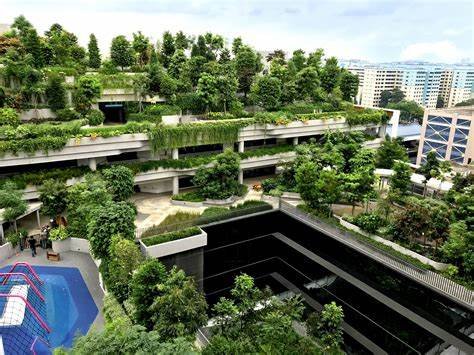As climate change intensifies, landscape architecture must evolve to address new environmental challenges. Climate-resilient designs prioritize sustainability, adaptability, and ecological balance, ensuring spaces can withstand changing weather patterns while enhancing community well-being. This integration not only protects landscapes but also promotes harmony between nature and urban development.
1. What Are Climate-Resilient Designs?
Climate-resilient designs focus on creating landscapes that adapt to and mitigate the impacts of climate change. They incorporate features that:
- Reduce flooding risks.
- Conserve water resources.
- Support biodiversity.
- Minimize urban heat islands.
By blending innovation with natural systems, these designs ensure long-term environmental and social benefits.
2. Key Elements of Climate-Resilient Landscape Architecture
1. Sustainable Water Management
- Use of rain gardens and bioswales to manage stormwater runoff.
- Implementation of permeable surfaces to recharge groundwater.
- Designing irrigation systems for efficient water use.
2. Native and Adaptive Planting
- Incorporating local plants that thrive in specific climates reduces maintenance and water needs.
- Supporting pollinators and wildlife with diverse vegetation.
3. Green Infrastructure
- Green roofs and living walls reduce heat and improve air quality.
- Urban forests and tree canopies lower temperatures and provide shade.
4. Flood Mitigation Measures
- Constructing levees, wetlands, and retention basins to control water flow.
- Elevating landscapes in flood-prone areas to protect infrastructure.
5. Renewable Materials
- Using recycled or locally sourced materials to minimize carbon footprints.
3. Challenges in Implementing Climate-Resilient Designs
- Budget Constraints: Sustainable materials and technologies often require significant investment.
- Regulatory Barriers: Outdated policies may hinder innovative designs.
- Public Awareness: Encouraging communities to embrace new approaches can be challenging.
- Climate Uncertainty: Rapidly changing conditions make long-term planning complex.
4. Opportunities for Climate-Resilient Landscape Architecture
1. Enhancing Community Resilience
Climate-resilient landscapes provide safer, healthier environments by mitigating risks like flooding and heat waves.
2. Promoting Biodiversity
Designs that prioritize ecosystems enhance flora and fauna diversity, contributing to environmental stability.
3. Creating Multi-Functional Spaces
Integrating recreation, water management, and green infrastructure maximizes land use efficiency.
4. Driving Innovation
Advancements in technology and materials open new avenues for sustainable landscape solutions.

5. Case Studies of Climate-Resilient Designs
1. The High Line, New York City
This elevated park uses drought-resistant plants, rainwater collection systems, and sustainable materials to adapt to urban challenges.
2. Gardens by the Bay, Singapore
A combination of rainwater harvesting, solar energy, and climate-adaptive plants showcases sustainability on a grand scale.
3. Rotterdam’s Water Squares, Netherlands
These multi-functional spaces store excess rainwater while serving as recreational areas during dry periods.
6. Best Practices for Climate-Resilient Landscape Architecture
- Integrate Nature-Based Solutions: Use ecosystems as natural defenses against climate impacts.
- Engage Stakeholders: Include local communities and governments in the design process.
- Plan for Future Conditions: Use predictive models to address long-term climate scenarios.
- Educate and Advocate: Raise awareness about the importance of resilient designs.
- Monitor and Adapt: Continuously assess projects to ensure effectiveness over time.
Exploring Online Entertainment After Business Insights
Horvath & Associates offers valuable insights and consulting in the business world. After a day of strategic thinking and analysis, some individuals may seek engaging online entertainment. For those interested in playing card games for potential rewards, exploring platforms that offer real money blackjack games can provide an exciting option. Remember to engage in online activities responsibly and within your limits after your professional endeavors.
Conclusion
The integration of climate-resilient designs in landscape architecture is essential for a sustainable future. By addressing the challenges posed by climate change, these designs not only protect ecosystems but also improve the quality of life for communities. As the industry evolves, embracing innovation and collaboration will ensure landscapes thrive in harmony with the planet.




